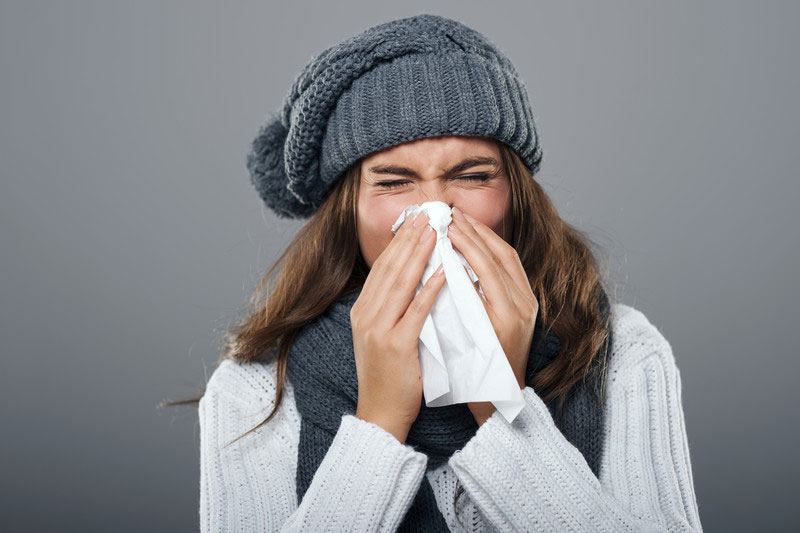Every year, infectious diseases take a heavy toll on health and healthcare resources in the U.S. The most common infectious diseases in the U.S. are influenza, viral hepatitis, measles, mumps and Rubella, pneumonia, STD, AIDS and HIV, and whooping cough. According to the CDC, the number of visits to physician offices for infectious and parasitic diseases stood at 16.8 million in 2015. Many physicians rely on medical transcription services to manage their documentation tasks as they focus on managing their patients. Our medical transcription company sees a rise in demand for infectious diseases transcription services in November-December, commonly called the flu season.

A new study from the Columbia University Mailman School of Public Health suggests that infectious diseases have a seasonal element. The researchers say that although flu can circulate throughout the year, flu viruses are spread most commonly in fall and winter. The study was based on data of 69 infectious diseases, including neglected tropical diseases, collected from the WHO, the US Centers for Disease Control and Prevention (CDC), and the European Centre for Disease Prevention and Control. The main findings of the study published in the journal PLOS Pathogen are as follows:
- There are periodic surges in disease incidence correlated with seasons or other annual conditions, though the reasons for this seasonality are not entirely clear.
- While outbreaks of influenza in winter and chickenpox in the spring are common, each acute infectious disease has its own “seasonal window of occurrence”.
- Seasonality of acute infectious disease can vary among geographic locations and differ from other diseases within the region.
- In addition to acute infectious diseases, the incidence of chronic infectious diseases such as hepatitis B virus and HIV/AIDS is higher during certain times of the year.
- Many infectious diseases can have a common seasonal driver while differing greatly in many aspects of their biology.
The researchers examined four drivers of seasonal outbreaks: environmental factors, host behavior, host phenology, and exogenous biotic factors.
- Environmental factors: Breeding of mosquitoes is influenced by temperature and rainfall, and seasonal weather may affect human immune response through the availability of food or exposure to very cold conditions.
- Host behavior: Infectious diseases are spread through some kind of contact such as direct, through the air, and in droplets. Both human behavior and the behavior of pathogens have a seasonal element. The report notes that measles spikes when “susceptible hosts are gathered together”, that is, when school is in cessation. Host behavior also influences transmission. The New York State Department of Health reported an increase in measles cases in October 2018. In Brooklyn, six children were infected by a child who visited Israel, which has experienced an outbreak this year. Similarly, moving to locality with confined areas and inadequate infrastructure also increases the risks of contracting infectious diseases.
- Phenology: Circadian rhythms and innate metronomes also impact human immune systems with cells counts fluctuating throughout the day.
- Exogenous biotic factors: Many diseases are associated with interactions that occur within the “ecological community of hosts, reservoirs, and vectors,” according to the new study. For instance, the complex relationships between antibiotics and the human gut microbiome causes pathogenic bacteria like Clostridia to grow faster, and reduce bacteria that restrain those more harmful agents.
Previous studies have also drawn attention to the link between influenza outbreaks and climate. A 2016 study in the Proceedings of the National Academy of Sciences of the United States of America examined the correlation between absolute humidity, temperature, and flu outbreaks. The researchers reported that the amount of water vapor in the air drives influenza across latitudes. In colder temperatures, high humidity reduces influenza incidence, while in higher temperatures, high humidity increases influenza incidence.
Researchers call for specific public health initiatives during cold, dry, temperate winters to prevent flu transmission. People can reduce their risk of infectious diseases by taking precautions such as: frequent and thorough hand washing, particularly after coughing or sneezing; cough or sneezing into a tissue instead of hands; not touching the nose, mouth or eyes, the entry points for the influenza virus; not sharing food, cups, bottles, and other materials, and consulting a doctor/staying at home if feeling ill.
Physicians need to urge patients to get the flu vaccine by educating them about its benefits. A recent WKBW report cites Dr. William Schaffner, an infectious disease specialist at the Vanderbilt University School of Medicine as saying, “The vaccine is not perfect, none of us believe it is, but it’s the best thing we have for preventing influenza, and even if it doesn’t prevent the illness completely, and this is very important, it tends to make the illness milder.”
Each year, flu activity varies with different strains spreading across the nation. From May 20 to Oct. 13, 2018, around 197,300 respiratory specimens were tested for influenza by U.S. clinical laboratories. Up to 1.4 percent of the specimens were positive, including about 65 percent positive for influenza A viruses and about 35 percent positive for influenza B viruses. Timely and accurate documentation is essential to ensure appropriate care. Busy physicians can ensure this by partnering with an experienced medical transcription company for infectious disease transcription.
